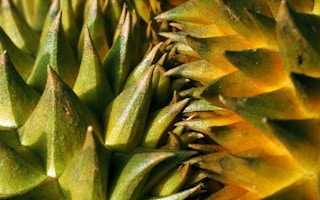Malaysian engineers are harnessing the country’s biodiversity to find alternative raw materials for high-tech electronic products such as electric vehicle batteries.
They have discovered that bamboo, coconut shells and durian fruit skins can be converted into an activated form of carbon used to make the components of electric batteries known as ‘supercapacitors’.
Activated carbon is normally made from coal but now researchers say it could be sourced from a natural, renewable source, providing income to rural people.
Project leader Dino Isa, an engineering professor from the University of Nottingham Malaysia Campus (UNMC), said that the process of obtaining or cultivating the plant products and converting them to activated carbon could be outsourced as a cottage industry to those living in rural areas.
The plants are readily available in the tropical nation, allowing for sustainable and environmentally friendly sourcing of such components. And the new process will reduce the material cost of producing battery components by up to 30 per cent, the researchers said.
“We were looking at how we can make supercapacitors more sustainable, and we were looking at materials around us that could be used,” Ng Kok Chiang, an external consultant for the UNMC project and its partner Sahz Holdings, told SciDev.Net.
“A lot of our tropical fruit are very good material for supercapacitors because they have good pores, meaning that there is more surface area for the electrostatic charges to be held, which increases the ability of the supercapacitor to store charges.”
The researchers intend to make full use of this property by tailoring supercapacitors for specific purposes or applications, such as energy storage for wind and wave power plants, emergency doors on aeroplanes and mobile devices.
Awang Noor Abdul Ghani, an associate professor at the forestry faculty at Putra University, Malaysia, said that this project had a lot of potential.
He predicted that more research will reveal new applications or uses of the abundant flora and fauna in Malaysia for technological purposes.
“This will help us maintain our conservation efforts and also use our natural resources to produce high quality and value-added products,” he said.
UNMC and Shaz Holdings launched a pilot plant to produce the ‘green’ supercapacitors last month and hope to open a high-volume production factory in the next five years.

















